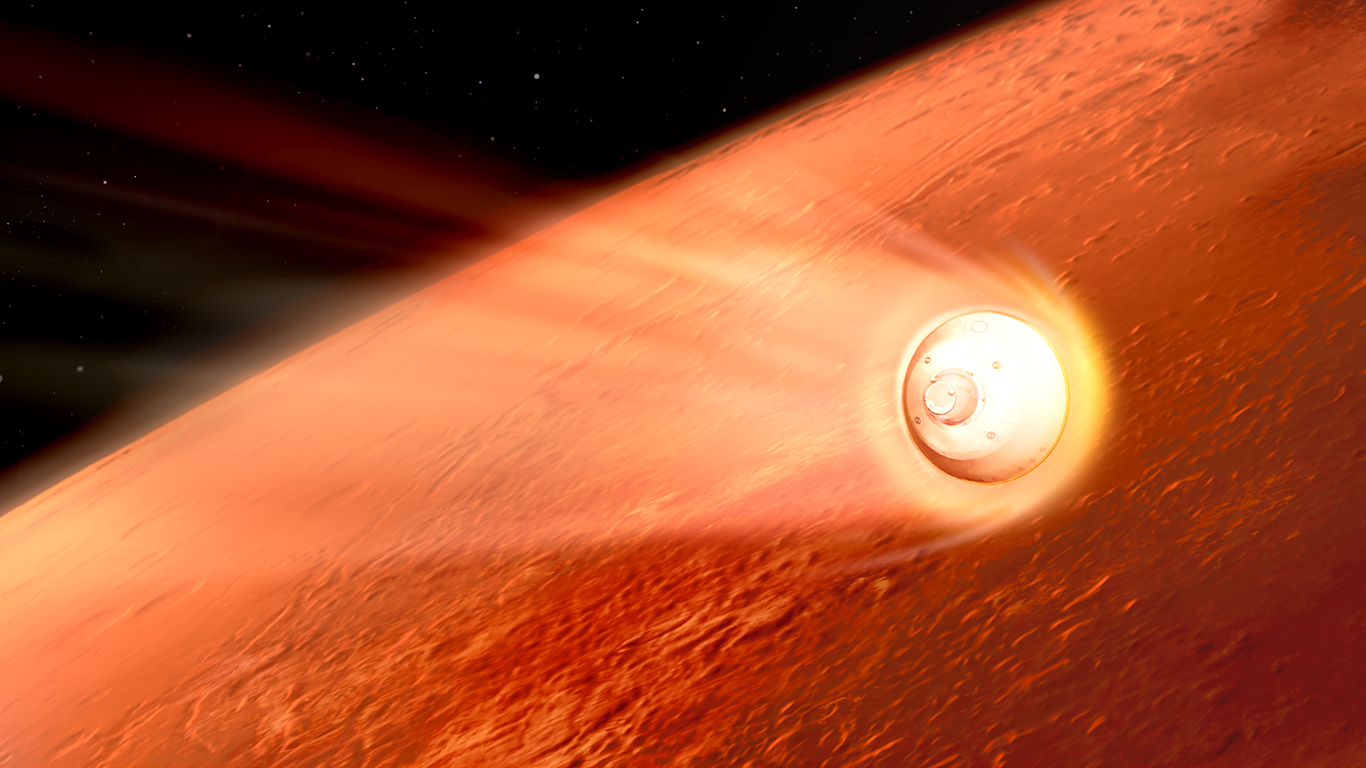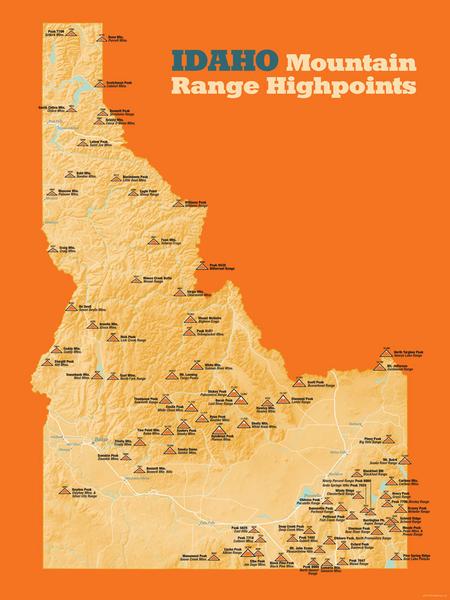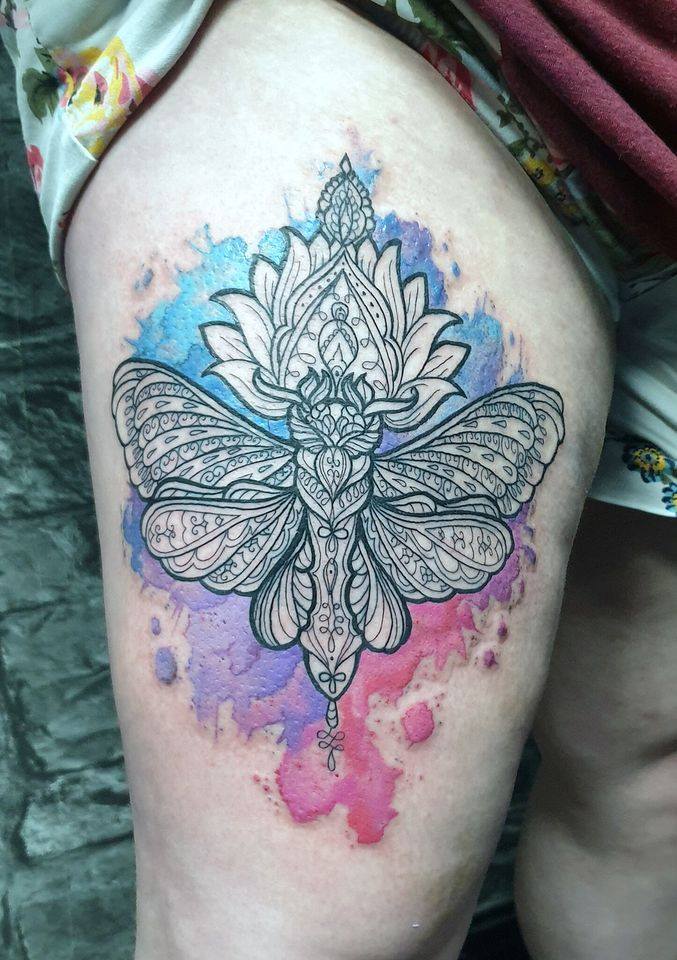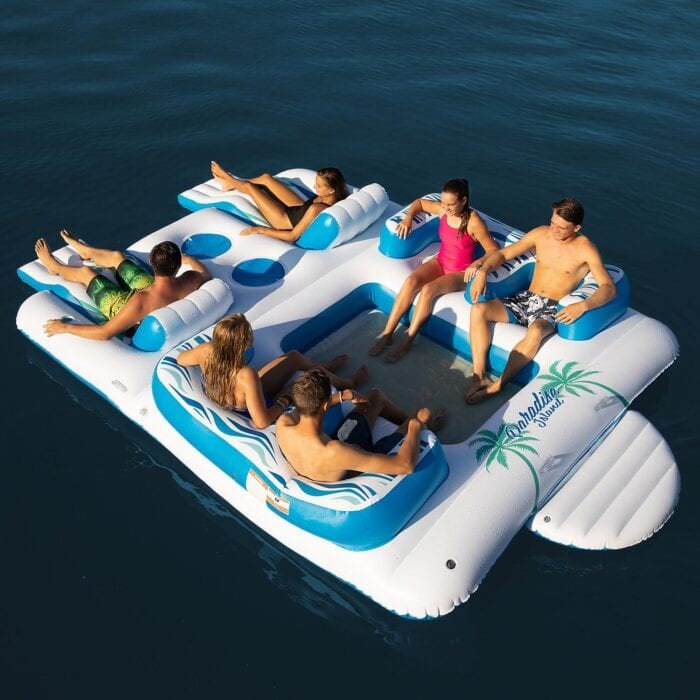The United Arab Emirates is a country that is made up of seven emirates. Those are Abu Dhabi, Dubai, Sharjah, Ajman, Fujairah, Ras al-Khaimah, and Umm al-Qaiwain. While the country as a whole has a prime minister and federal president, each emirate has its own ruler that oversees the local governments. The UAE was established in 1971, and since that time, it has seen great population growth. Its largest city is Dubai, which has reached the one million resident milestone with a population of 1.1 million. However, there are other cities within the UAE that have high population counts.
The second most populous city, Abu Dhabi, has over 600,000 residents. There are four additional cities with populations that have surpassed 100,000. Seven cities have populations that are between 10,000 and 100,000, while remaining cities and towns make up the remainder of the population. Apart from being the capital city, it is also the second largest emirate in the world with an approximate population of 1.6 million people. Abu Dhabi is classified as one of the wealthiest cities in the world with most of its revenue originating from petroleum products. This emirate accounts for approximately two-thirds of the UAE economy.
Unlike Dubai which is more Westernized, Abu Dhabi is more into cultural traditions. Abu Dhabi is also a major tourist attraction state where most people visit for cultural reasons such as to visit the Sheikh Zayed Mosque, have fun on the sandy beaches, visit the Yas Island and the famous Ferrari World Abu Dhabi. Since then, the UAE has been a sovereign nation, enjoying the profits of its natural resources—its reserves of oil and natural gas are the seventh-largest in the world, and it has the seventh-highest GDP per capita. This wealth has turned the Emirates into a major hub of trade, travel, tourism and finance.
Dubai's Burj Khalifa, the tallest structure in the world, is emblematic of the Emirates' dramatic construction boom and rise to global prominence. Despite being the smallest emirate, Ajman is the fourth most populous state in the UAE with about 258,000 people. The major tourist attractions in this area include cultural destinations, hotels, and shopping malls. The city hosts the Ruler's office, several banks, and approximately fifty local and international retail shops. Ajman was founded in 1803 after Sheik Rashid bin Humaid Al Nuami conquered the coastal settlements. The UAE has developed from a juxtaposition of Bedouin tribes to one of the world's most wealthy states in only about 50 years.
Between 2000 and 2018, average real gross domestic product growth was at close to 4%. It is the second largest economy in the GCC , with a nominal gross domestic product of US$414.2 billion, and a real GDP of 392.8 billion constant 2010 USD in 2018. Since its independence in 1971, the UAE's economy has grown by nearly 231 times to 1.45 trillion AED in 2013.
The non-oil trade has grown to 1.2 trillion AED, a growth by around 28 times from 1981 to 2012. Backed by the world's seventh-largest oil deposits, and thanks to considerate investments combined with decided economic liberalism and firm Government control, the UAE has seen their real GDP more than triple in the last four decades. Nowadays the UAE is one of the world's richest countries, with GDP per capita almost 80% higher than OECD average. The Prime Minister, who is appointed by the Federal Supreme Council, appoints the ministers. The Council of Ministers is made up of 22 members and manages all internal and foreign affairs of the federation under its constitutional and federal law. In December 2019, the EAU became the only Arab country, and one of only five countries in the world, to attain gender parity in a national legislative body, with its lower house 50 per cent women.
The President and Prime Minister are elected by the Federal Supreme Council. Usually, a sheikh from Abu Dhabi holds the presidency and a sheikh from Dubai the prime minister-ship. All prime ministers but one have served concurrently as vice president.
Sheikh Zayed bin Sultan Al Nahyan is the UAE founding father and widely credited for unifying the seven emirates into one country. He was the UAE's first president from the nation's founding until his death on 2 November 2004. On the following day the Federal Supreme Council elected his son, Sheikh Khalifa bin Zayed Al Nahyan, to the post. Federation formed in 1971 by seven emirates known as the Trucial States?
Abu Dhabi , Dubai, Sharjah, Ajman, Fujairah, Ras al-Khaimah, and Umm al-Qaiwain. In addition to a federal president and prime minister, each emirate has a separate ruler who oversees the local government. Dubai is the most populous and the largest emirate in the UAE with approximately 2,502,715 people.
Notably, it is the most progressive emirate among the seven emirates. Despite being a desert, the country has managed to utilize its resources and according to the 2015 statistics, it has an annual GDP of 105.6 billion USD. Unlike its neighboring emirates such as Abu Dhabi, the oil reserves of Dubai have been exhausted; oil contributes only 2 % of the total GDP of this emirate. Although it started as a port, Dubai has developed into a luxurious emirate that is home to the world's tallest building.
The United Arab Emirates is a federal constitutional monarchy made up from a federation of seven hereditary tribal monarchy-styled political system called Sheikhdoms. It is governed by a Federal Supreme Council made up of the ruling Sheikhs of Abu Dhabi, Ajman, Fujairah, Sharjah, Dubai, Ras al-Khaimah and Umm al-Quwain. All responsibilities not granted to the national government are reserved to the individual emirate. A percentage of revenues from each emirate is allocated to the UAE's central budget. The United Arab Emirates uses the title Sheikh instead of Emir to refer to the rulers of individual emirates.
The title is used due to the sheikhdom styled governing system in adherence to the culture of tribes of Arabia, where Sheikh means leader, elder, or the tribal chief of the clan who partakes in shared decision making with his followers. Human occupation has been traced back to the emergence of anatomically modern humans from Africa some 124,000 BCE through finds at the Faya-2 site in Mleiha, Sharjah. Burial sites dating back to the Neolithic Age and the Bronze Age include the oldest known such inland site at Jebel Buhais. Known as Magan to the Sumerians, the area was home to a prosperous Bronze Age trading culture during the Umm Al Nar period which traded between the Indus Valley, Bahrain and Mesopotamia as well as Iran, Bactria and the Levant. The ensuing Wadi Suq period and three Iron Ages saw the emergence of nomadism as well as the development of water management and irrigation systems supporting human settlement in both the coast and interior.
The Islamic age of the UAE dates back to the expulsion of the Sasanians and the subsequent Battle of Dibba. The UAE' history of trade led to the emergence of Julfar, in the present-day emirate of Ras Al Khaimah, as a regional trading and maritime hub in the area. The maritime dominance of the Persian Gulf by Emirati traders led to conflicts with European powers, including the Portuguese Empire and the British Empire. Islam is the official religion and Arabic is the official language.
The United Arab Emirates' oil and natural gas reserves are the world's sixth and seventh-largest, respectively. Zayed bin Sultan Al Nahyan, ruler of Abu Dhabi and the country's first president, oversaw the development of the Emirates by investing oil revenues into healthcare, education, and infrastructure. The United Arab Emirates has the most diversified economy among the members of the Gulf Cooperation Council. In the 21st century, the country has become less reliant on oil and gas, and is economically focusing on tourism and business.
The government does not levy income tax, although there is a corporate tax in place and a 5% value-added tax was established in 2018. This gorgeous capital of United Arab Emirates is an experience that one needs to get at least once in their lifetime. One can also visit various malls being here where there is the famous mosque named Sheikh Zayed Grand Mosque which is a really distinct mosque with Persian carpet, stunning crystal chandeliers and also has the space for 41,000 worshipers. One can drive to the south and reach the world renowned for oil, the famous Abu Dhabi which is the capital of UAE also famously known as the popular meeting point for culture, sport and leisure.
UAE is one of those countries that one can visit for a relaxing time and experience some of the marvels of the world while being on an Top Cities United Arab Emirates Tour that can be accessed by booking holiday packages to UAE. If the Supreme Council objects to the conclusion of these conventions, the matter must be put on hold until the Federal Court decides as quickly as possible on that objection. Ras al-Khaimah is situated to the northern part of the UAE, bordering part of Oman's territory, the Musandam. The population of this emirate is 205,000 people, and the Emirati citizens are the largest group. Ras al-Khaimah does not have any oil, and it has, therefore, focused on advancing its industrial sector. The primary economic areas of Khaimah include real estate, tourism, building materials, service sector, and agriculture.
The most recognized types of attraction in this emirate include shopping, nature, parks, water, and amusement parks. The capital city of this emirate is also referred to as Ras al-Khaimah and it is a home to most of the citizens of Ras al-Khaimah emirate. This is a major way of distributing oil wealth among the national population.
The immigrant population also benefits to some extent, particularly in regard to medical care. The fact that the traditional tribal system of government each emirate was based on similar political principles facilitated the establishment of the UAE. Hereditary dynastic family rule still operates in each emirate as a local government system under the umbrella of the federal system.
What Are The Uae States Members of the ruling families occupy the most important positions in their political administrations. While the political system continues to retain some of its traditional values at formal and informal levels, it has been able to keep pace with economic and social change. The sheikhs are highly regarded for performing the dual roles of modernizers and guardians of the cultural heritage. They still have traditional majlis where citizens have access to their leaders. The states gained autonomy following World War II (1939–45), when the trucial states of Bahrain and Qatar declared independent statehood.
The rest were formally united in 1971, with the city of Abu Dhabi serving as the capital. The introduction of mandatory health insurance in Abu Dhabi for expatriates and their dependents was a major driver in reform of healthcare policy. Abu Dhabi nationals were brought under the scheme from 1 June 2008 and Dubai followed for its government employees. The UAE attracts medical tourists seeking cosmetic surgery and advanced procedures, cardiac and spinal surgery, and dental treatment, as health services have higher standards than other Arab countries in the Persian Gulf. The United Arab Emirates (or the U.A.E as it is commonly referred to as) is located in the Southwest Asia and it is located in the Arabian Peninsula. There are seven emirates or states in the United Arab Emirates and they are Fujairah, Ras al-Khaimah, Umm al-Quwain, Ajman, Sharjah, Dubai and Abu Dhabi.
Abu Dhabi is the capital city of the country and it is also the second largest city of the U.A.E. Abu Dhabi is considered to be the industrial, cultural and political center of the country. Being one of the most premier tourist destination in UAE, one can find a lot of places for accommodation being here. Just 14% live in rural areas and towns, while the remaining 86% live in the urbanized cities within the seven emirates. The UAE has seen a steady pattern of growth through the years, which is expected to slow down in the near future. Some experts also anticipate that the economy will be slowing down. Only time will tell how the growth of these major cities and the population that resides within them will change in the future.
With a total population of 68,000 people, Umm al-Quwain is the least populous state in the UAE. Unlike the other emirates, Quwain has not made any findings of oil products or gas. Therefore, its economy majorly relies on revenue collected from hotels, tourism, and parks.
Towns have been transformed from mud-walled communities into commercial capitals integrated in the global economy. Because of the small population and harsh desert interior, 80 percent of the population lives in the coastal capital cities, leading social scientists to describe them as city-states. The education system through secondary level is monitored by the Ministry of Education in all emirates except Abu Dhabi, where it falls under the authority of the Abu Dhabi Education Council. The public schools are government-funded and the curriculum is created to match the United Arab Emirates' development goals. The medium of instruction in the public school is Arabic with emphasis on English as a second language.
There are also many private schools which are internationally accredited. Public schools in the country are free for citizens of the UAE, while the fees for private schools vary. As impressive as economic growth has been in the UAE, the total population has increased from just around 550,000 in 1975 to close to 10 million in 2018. This growth is mainly due to the influx of foreign workers into the country, making the national population a minority. The UAE features a unique labour market system, in which residence in the UAE is conditional on stringent visa rules. This system is a major advantage in terms of macroeconomic stability, as labour supply adjusts quickly to demand throughout economic business cycles.
The UAE coast stretches for nearly 650 km along the southern shore of the Persian Gulf, briefly interrupted by an isolated outcrop of the Sultanate of Oman. Six of the emirates are situated along the Persian Gulf, and the seventh, Fujairah is on the eastern coast of the peninsula with direct access to the Gulf of Oman. Most of the coast consists of salt pans that extend 8–10 km inland. The largest natural harbor is at Dubai, although other ports have been dredged at Abu Dhabi, Sharjah, and elsewhere. Numerous islands are found in the Persian Gulf, and the ownership of some of them has been the subject of international disputes with both Iran and Qatar.
The smaller islands, as well as many coral reefs and shifting sandbars, are a menace to navigation. Strong tides and occasional windstorms further complicate ship movements near the shore. The UAE also has a stretch of the Al Bāţinah coast of the Gulf of Oman. The Musandam Peninsula, the very tip of Arabia by the Strait of Hormuz, and Madha are exclaves of Oman separated by the UAE.
Abu Dhabi, extending along the Persian Gulf coast and into the interior of the Arabian Peninsula, occupies about four-fifths of the UAE's territory. The remaining six emirates are clustered together on the Musandam Peninsula to the northeast. The UAE is mostly a flat, sandy desert except for the easternmost region, where the northern tip of the Al Hajar Mountains stretches into the country from Oman to the east. The United Arab Emirates experiences a dry and hot climate, with the hottest months being July to August.
There are about 4.8 million people living in the country and of this number, only about 22% are the citizens of the countries and the remaining people are foreigners. In the Middle East, the United Arab Emirates is said to have the most diverse population. As the standard of living is high in this nation, it has attracted people from different countries like Philippines, India, Egypt, Sri Lanka, Yemen, Jordan, Bangladesh and Pakistan. Dubai is the most populous city in the country as it has about 1.6 million people living in it.
The idea behind the construction of Burj Khalifa and the surrounding complex was to attract international tourism and diversify the country's economy, mainly based on Oil & Gas production and export. The second largest city in the Emirate of Abu Dhabi, Al Ain is about 160 km away from the famous Abu Dhabi. Housing the largest proportion of the Emirati nationals, Al Ain is one of the most visited places in UAE, being set up in a beautiful green environment; this city is also famous by the name of the Green City. Being touted as the third biggest city in UAE, Sharjah is located on the Arabian Peninsula which is situated along the gorgeous gulf of Persian which is on the southern coast. Being incredibly famous as the capital of Emirate of Sharjah, contributing to the GDP of UAE by 7.4%, Sharjah is a major center of industry and culture.
Now there has been a major ban on alcohol in the Emirate of Sharjah, also famous as the best place to study for University students. Abu Dhabi is the largest emirate as it accounts for 84% of the total land area of the federation. Abu Dhabi is also home to the capital city also called Abu Dhabi. Most of the Emirate sits immedaitely next door to Dubai and includes a coastal city, as well as rolling sand dunes and enclaves and incredibly picturesque exclaves and enclaves on the country's eastern coast.























































